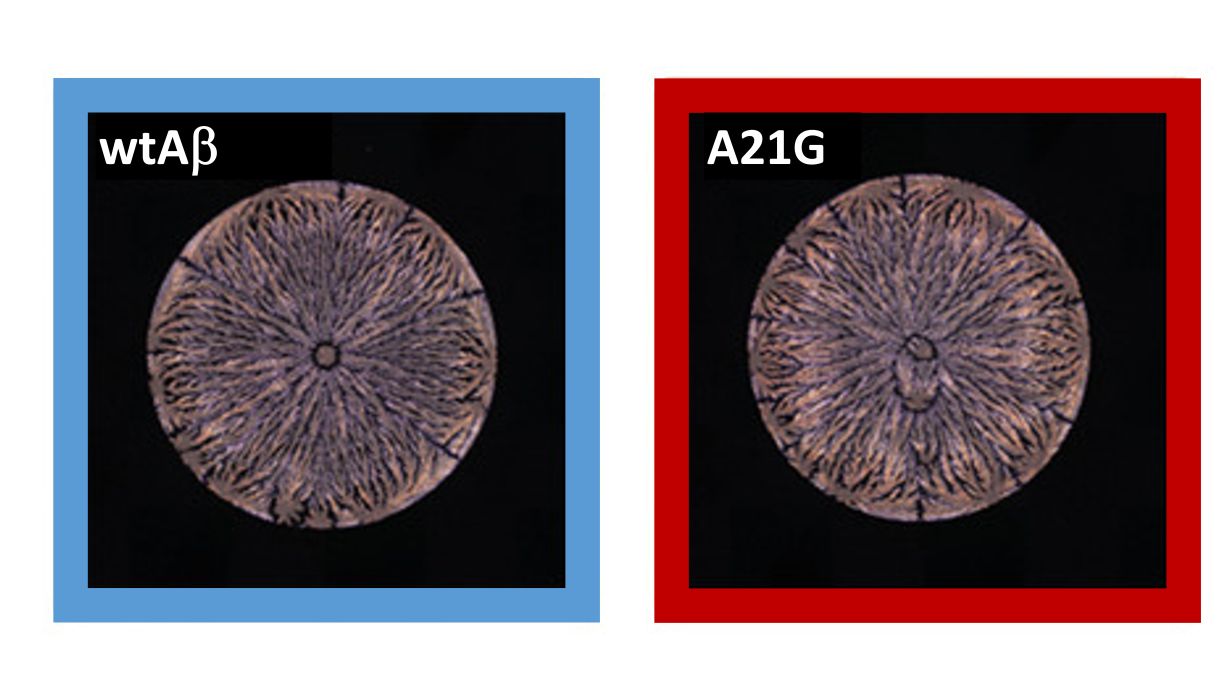Neurodegenerative diseases like Alzheimer’s disease or Parkinson’s disease are caused by folding errors (misfolding) in proteins or peptides, i.e. by changes in their spatial structure. This is the result of minute deviations in the chemical composition of the biomolecules. Researchers at the Karlsruhe Institute of Technology (KIT) have developed a simple and effective method for detecting such misfolding at an early stage of the disease. Misfolding is revealed by the structure of dried residue from protein and peptide solutions. The method involves analyzing micrographs with neural networks and has a predictive accuracy of over 99 percent. The results have been published in Advanced Materials.
The biochemical structure of proteins and peptides determines their biological functions. There are many indications that even minute structural or spatial changes can promote the development of diseases. Many neurodegenerative diseases have been attributed to misfolding of proteins and peptides that is caused by such changes. Amyloid beta (Aβ42) peptides play a key role in Alzheimer’s disease; they differ in a single amino acid residue and represent hereditary mutants of Alzheimer's disease.
Until now there has not been a simple and accurate method for predicting mutations in proteins. At KIT’s Institute of Functional Interfaces (IFG), a research group led by Professor Jörg Lahann has developed a method for detecting misfolding via the structure of dried protein and peptide solutions. “The stain patterns were not only characteristic and reproducible but also result in a classification of eight mutations with a predictive accuracy of more than 99 percent,” said Lahann, author of the study, in describing the results. The group showed that crucial information about the primary and secondary structures of peptides can be gleaned from the stains left behind by drying droplets of peptide solution on a solid surface.
Stain Patterns as Exact Peptide Fingerprints
The protein and peptide solutions are precisely placed on glass slides by an automated pipetting system to ensure controlled and reproducible results. The surfaces of the slides were prepared in advance with a hydrophobic polymer coating. To analyze the complex stain patterns from the dried droplets, the researchers acquired images using polarization microscopy. The images were then analyzed with deep-learning neural networks.
“Since the structures are very similar and difficult to distinguish with the naked eye, it was definitely a surprise that the neural networks were so effective,” says Lahann about the results. “The stain patterns of amyloid beta peptides serve as exact fingerprints that reflect the structural and spatial identity of a peptide.” This technology enables the identification of Alzheimer variants with maximum resolution within a few minutes, according to Lahann.
Simple Sample Preparation Delivers Fast Diagnoses
The results suggest that a method as simple as drying a droplet of peptide solution on a solid surface can serve as an indicator for minute differences in the primary and secondary structures of peptides. “Scalable and accurate detection methods for the stratification of conformational and structural protein alterations are urgently needed in order to decode the pathological signatures of diseases like Alzheimer’s and Parkinson’s,” says Lahann. It is also a relatively simple method that requires no elaborate preparation of samples and thus enables simple and patient-friendly diagnosis. Furthermore, the method has great potential for other applications in medical diagnostics and in the molecular detection of diseases. (sfo)
Original publication
Azam Jeihanipour, Joerg Lahann, Deep-Learning-Assisted Stratification of Amyloid Beta Mutants Using Drying Droplet Patterns, Advanced Materials, 2022, 34(24), 2110404, DOI: 10.1002/adma.202110404
https://onlinelibrary.wiley.com/doi/full/10.1002/adma.202110404
More information on the KIT Materials Center: https://www.materials.kit.edu/298.php
In close partnership with society, KIT develops solutions for urgent challenges – from climate change, energy transition and sustainable use of natural resources to artificial intelligence, sovereignty and an aging population. As The University in the Helmholtz Association, KIT unites scientific excellence from insight to application-driven research under one roof – and is thus in a unique position to drive this transformation. As a University of Excellence, KIT offers its more than 10,000 employees and 22,800 students outstanding opportunities to shape a sustainable and resilient future. KIT – Science for Impact.

